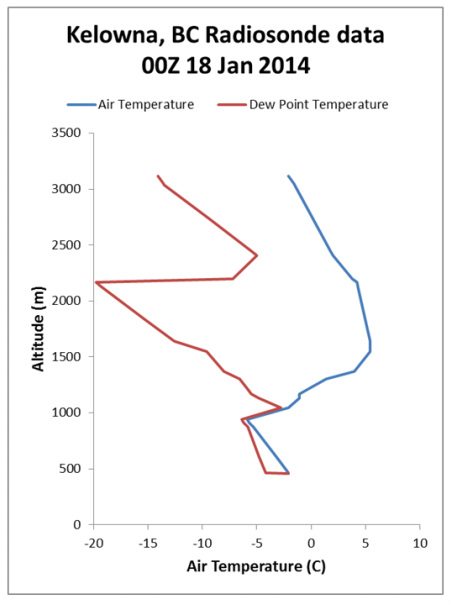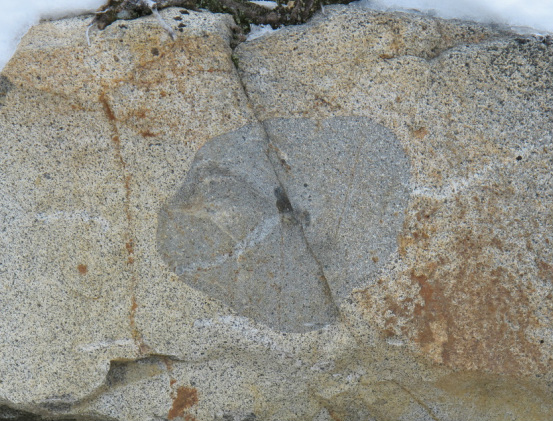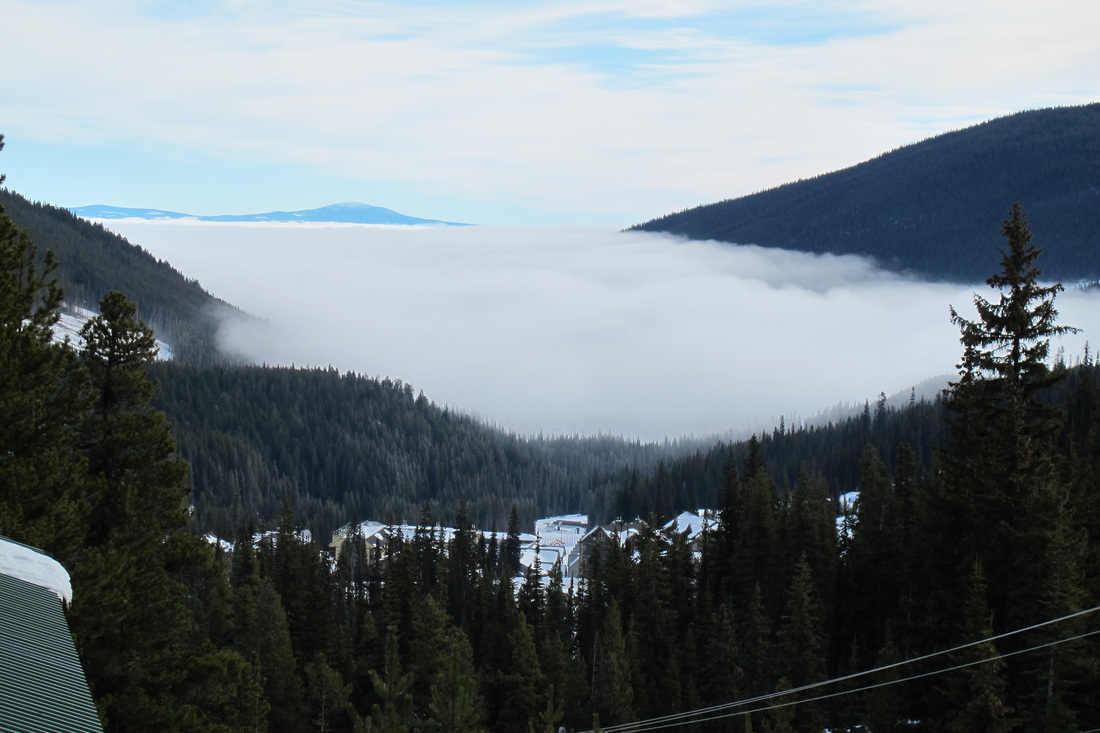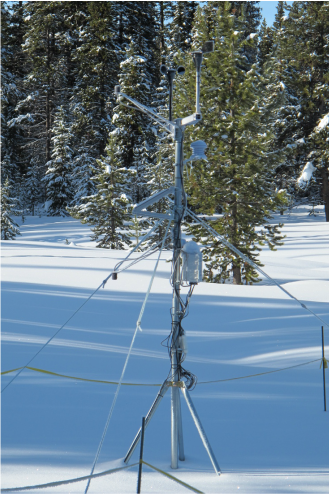I've been driving past this outcrop for the past 4 years and finally got around to stopping and taking a photo. The rock is granite with an andesite xenolith. The xenolith is about 40 cm across. A xenolith's are found in plutonic rock into which chunks of surrounding country rock become trapped within the magma prior to cooling. Glad I finally stopped for a closer look.
Now that is some thick valley cloud sitting in the Keremeos Creek Valley just below Apex Village on Jan 27. The cloud level indicates the top of the inversion layer.
It's been cloudy in the Okanagan Valley the past few days. Cold air is sitting in the valley while warmer air sits above the cloud layer is low leading to thick overcast conditions. This situation is called an inversion and is pretty common in our area this time of year. The graph below shows changes in air temperature (blue) and dew point temperature (red, the temperature at which the air will become saturated) with altitude. Air temperature decreases slightly to an altitude of around 1000 m and then starts increasing and stay above 0C until about 2500 m indicating the the temperature is greater at higher altitude relative to the valley bottom. Comparing air and dew point temperatures, the portion of the graph below about 1100 m shows they are very similar, and this is where the clouds are sitting in/over the valley. Above 1100 m and Tdew < Tair indicating unsaturated conditions and clear skies.  Radiosonde (weather ballon) data collected from Kelowna on Jan 18, 2014 at 00 Zulu time (local time = 1600 hrs Friday Jan 17, 2014). The radiosonde records the temperature as it rises through the atmosphere and transmits the data to a station on the ground. Radiosonde data from around the world can be access through the University of Wyoming (http://weather.uwyo.edu/upperair/sounding.html). Similar effects are currently being seen to the south in Eastern Washington. Cliff Mass from the University of Washington has written about it today.
Part of the research being done by the Watershed Science lab is making ground based measurements of air temperature with altitude to gain a better understanding of the frequency and magnitude of these types of events in the south Okanagan. To escape the cloud, head up and enjoy the sun and warmer temperatures. The conditions are Nickel Plate Nordic Centre have been sunny and spectacular the past few days (if perhaps a bit warm for the serious nordic skiers). The weather station installed at Nickel Plate back in August is still standing. A bit of hoar frost on the sensors. Next week I'll remember to take along the data shuttle to make sure it's working well.
Great to be out on the trails for the first time this year. Amazing conditions yesterday. The first snow shoe trip of winter up to Ellis Creek Reservoir #4 with Ryan Ransom, Physics and Astronomy professor at OC.
Next time out on the nordic skiis at Nickel Plate. |




 RSS Feed
RSS Feed